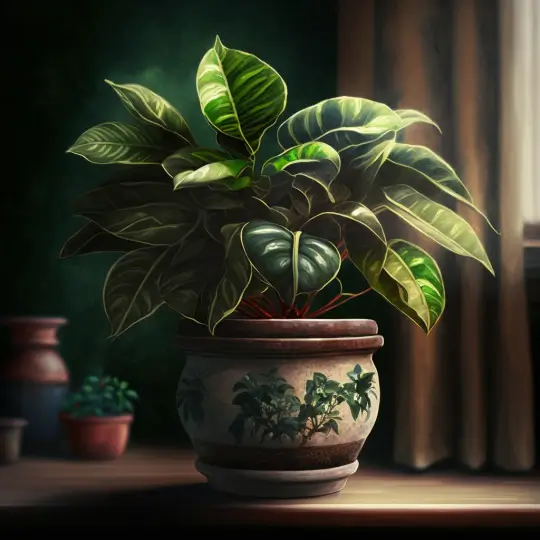
3 advantages of houseplants you didn’t know about
The popularity of houseplants really did go over the roof these past couple of years.
Although people have been enjoying little bits of at-home-gardening for a long time, having indoor plants has become a real trend among social-media users. I bet you see beautiful pictures of living rooms and kitchens decorated with plants all over your Instagram feed, too.
This trend became particularly popular especially during and after the pandemic when people were searching for ways to feel outside even when they were inside. And especially among Millennials who came up with the statement that plants are the new pets and pets are the new kids. Do you agree? I decided to not think about it too much after realizing just how many plants I own. But how much is too much, really?
Fortunately for me, it turns out houseplants are much more than simple home decor or ‘millennial pets’ for that matter. In fact, they have so many advantages, it’s hard to not want them in our homes.
Here are my top 3 advantages of keeping plants at home I’m pretty sure you didn’t know about.
- Productivity boost
Many researches show that indoor plants have various positive psychological effects on people. They help with stress relief, anxiety and even depression! It’s taking up gardening or even just looking at the plant that significantly improves our mental health. The truth is that taking care of plants generally gives us a feel of purpose and seeing them grow provides makes us happy and grateful.
But their positive effect on our minds doesn’t stop there. As it turns out, having a nice little pot with a plant somewhere near may lead to much better results at school or work. Why? Well, these little friends of ours boost our productivity making us do much better in our professional life!
And it might be just this productivity boost that is the game changer for you.
How do plants work… while we work?
Get ready for a tip that will truly transform your time spent working and make you forget all the hours you spend looking for your will to accomplish even the simplest task.
Here is something I didn’t know until recently. According to research, having indoor plants near you and being able to look at them while working notably improves your productivity. letting you work or study faster and accomplishing more tasks than if you didn’t have plants for the same period of time. Not gonna lie, I’m impressed.
And there’s more!
A plant or two around you lets you be even be more creative. Nature in general is known for helping with inspiration but even houseplants are pretty good at helping you feel inspired while working in your home-office or… normal office. Decorating with some greenery is therefore especially important if your job is in the creative field.
What’s more, they help you concentrate better and pay attention longer while lowering your stress levels. Good job, plants! This means an overall better performance at work or school, better results and more tasks done! .
So, I don’t know about you but I’m definitely putting a cactus on my work desk.
2. Key element in interior design
I don’t know if you have recently picked up a magazine on interior design but I have been LOVING the topic these past couple of months. In fact, after a whole evening of watching designers giving advice on YouTube, I felt so inspired, I just had to rearrange my whole living room… at 3 in the morning. Totally worth it.
During these hours spent binge-watching interior designers talking about everything you could think of (lightning, layering, best position of the carpet… you get the idea) I learned a little about the main trends that have been stealing the spotlight and that are slowly being replaced.
You’re probably familiar with the love of neutrals found in the all-white trend for example or the Scandinavian minimalist style. Indeed, simple monochromatic decor has been the THING and a large part of my furniture agrees with this. But I have also noticed that there a couple of elements have been breaking the neutral pattern and are drawing the eye. In fact, they have been finding their place in interior design for a while becoming more of a staple rather than a trend.
Bringing nature inside
This is the love of incorporating natural materials and elements inside our homes. Including wooden or glass furniture for example is a great idea, but it is decorating with houseplants that has been the number 1 tip of every interior designer!
This love for putting what’s on the outside inside has deep roots in our psychology as we are always drawn to nature and feel calmer and better when surrounded by it. So, indoor plants make our whole space feel more homey.
How plants contribute to a better-looking home
What this means is that placing houseplants around the room adds color in a completely natural way, making the color palette of the space more attractive. It also makes our space feel extra cozy as plants have their own way of transforming the atmosphere making it feel full of life!
The great thing about using them as decor around your house is that they can be found in all kinds of shapes and sizes, in pretty pots that can be placed by your window, on your shelves, on the coffee table, on the floor and even hanging from the wall or ceiling! They might actually be the easiest and cheapest way to use your empty space.
And one more thing, have you heard about that tip that in a room you should have furniture at different heights? As it turns out, it’s important that you have elements that are short, medium and tall so they can break up the space and make it visually more appealing, by giving it a feeling of harmony. What could you do to easily add decoration with different heights? You guessed it - plants!
3. Improving air quality
Indoor plants prove themselves to be quite the helper when it comes to working and an excellent home decor element. But they are very good for our health, as well.
According to numerous studies houseplants help purify the air in our homes. They do a great job at removing pollution coming from cleaning products, chemicals from furniture or carpets, paint, polish, mold, etc. that could lead to a number of diseases.
Indeed, indoor plants are great at eliminating contaminants from the air in our indoor spaces and contribute to a healthier environment for us and our families. Actually, there are 3 types of plants that are particularly efficient in removing toxins from the air:
Rubber tree
Rubber trees are popular houseplants that that are also quite easy to take care of. The right balance of water and sunlight is key to growing your rubber tree but in fact it doesn’t need too much of either. So it may not seem very special at first. However, its purifying qualities make it a very desired plant for indoor spaces. In fact, it’s able to eliminate harmful gases, such as formaldehyde, that come from paint, wood polish and coating for example. So, you can count on your rubber tree for healthier air at home.
Snake plant
Snake plants (which also have the cool name ‘Mother-in-law’s Tongue’) have become extremely popular! And honestly, I’m not surprised, not even a little bit. They are very easy to take care of, as they thrive in sunlight and in dark corners and require very little watering. Great for beginners and an all-time favorite, it’s known not only for the fact that it’s nearly impossible not to have it in perfect condition but also for it’s air-purifying qualities. They do a great job in filtering the air and removing toxic polluants not only during the day as other houseplants, but also at night.
Spider plant
You guessed it - this plant looks like a spider. But this is not the reason why it is so common. Yes, its spiky leaves are attractive and it’s extremely easy to take care of. It survives in various conditions and requires much less sunlight than other plants. Still, its famous mostly for the fact that it’s very effective at absorbing toxins from the air, such as formaldehyde. This common toxic household gaz can be neutralized by the leaves of the spider plant leaving the air in a much better quality.
What now?
So, here they are - some of the many reasons I became a plant mom and never looked back. The truth is, i can’t even imagine my home without all these green leaves making the space fell more cozy and full of energy. I hope these advantages of having houseplants have inspired you if you’re just starting your journey.
And for those of you wondering whether you should get that new plant, the answer is ‘yes’!
